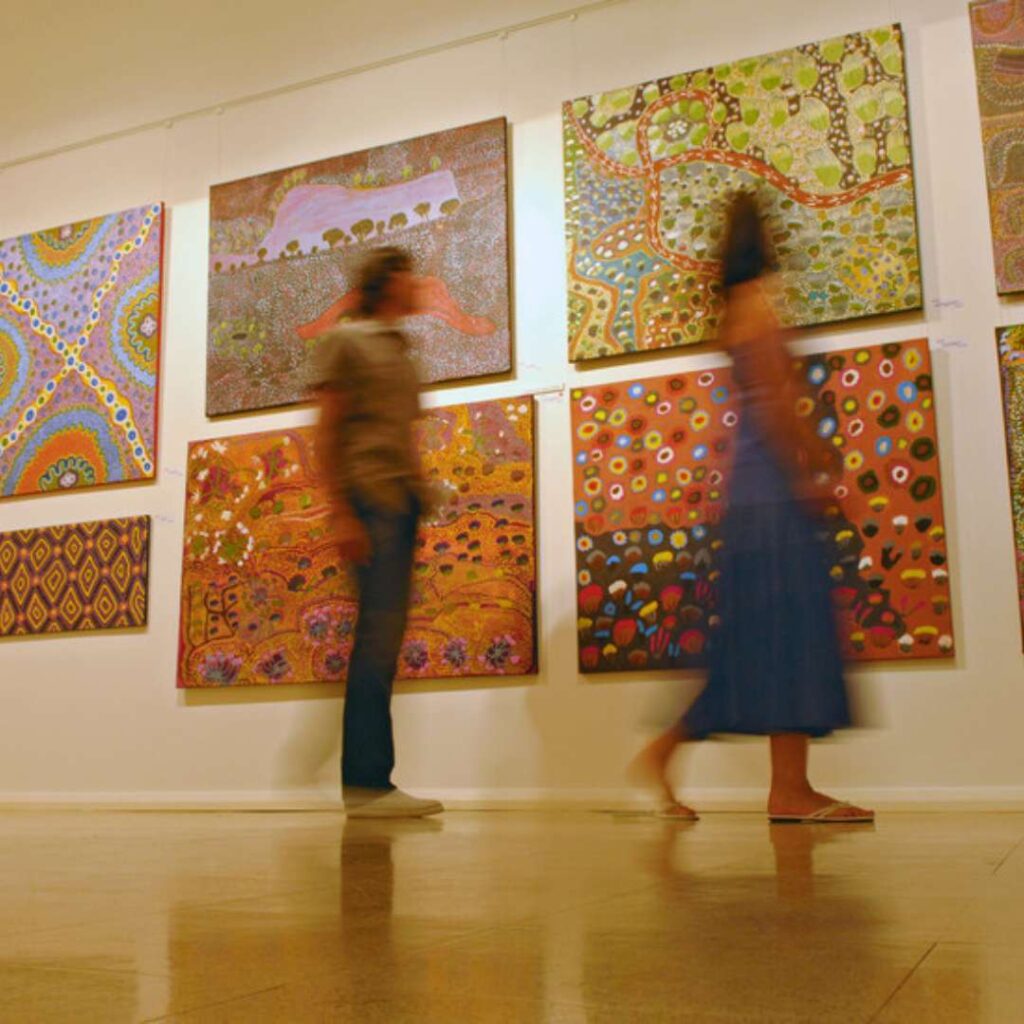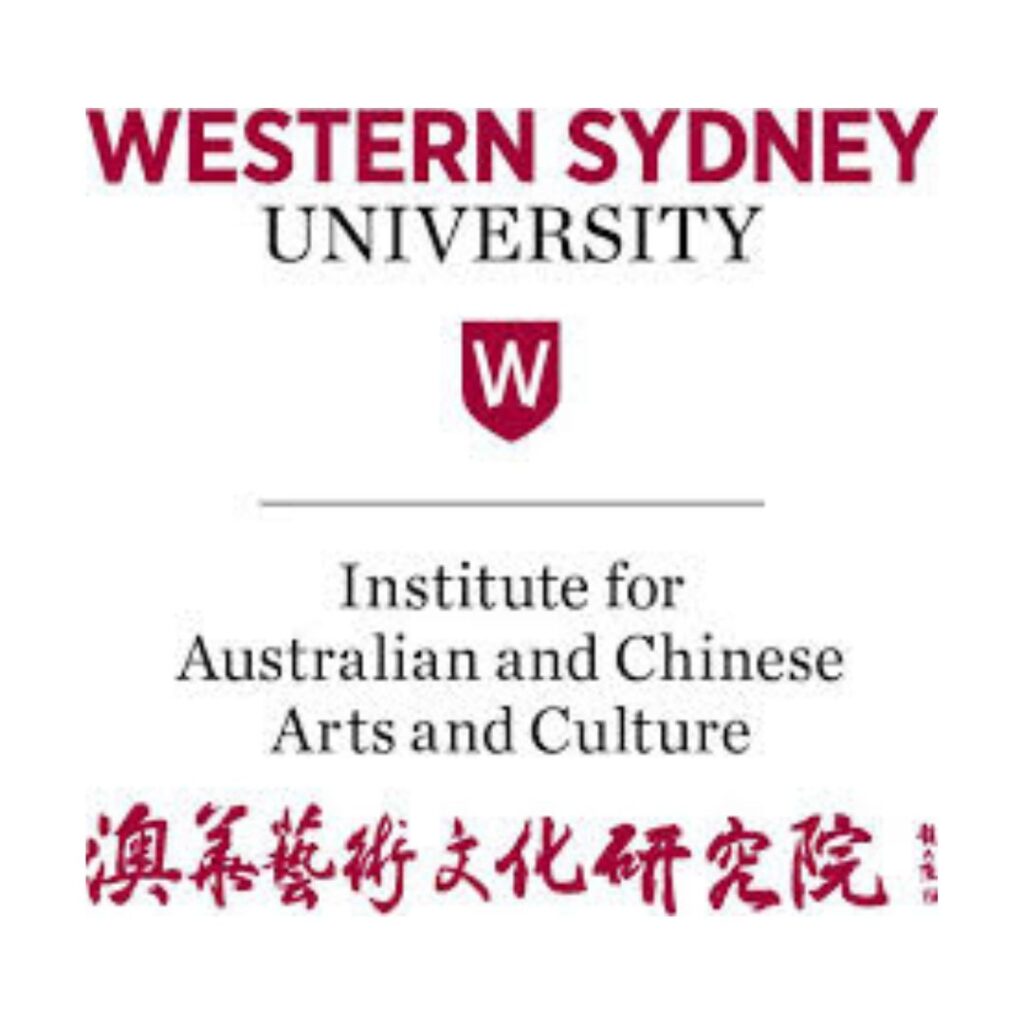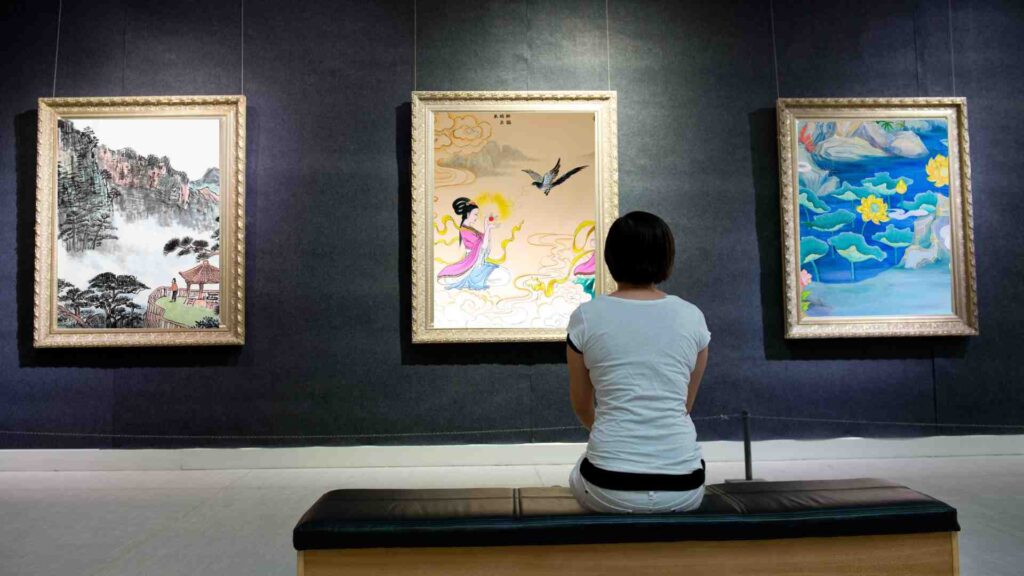In recent decades, Chinese Australian artistic voices have emerged as a formidable force within the art world, breaking barriers and pushing creative boundaries. Despite their rich cultural heritage, Chinese artists have often been silenced or overlooked. However, with the rise of contemporary art institutions championing their stories, a new era of visibility is on the horizon. Across Australia, institutions such as the White Rabbit Gallery, China Cultural Centre (CCC) Sydney, the Institute for Australian and Chinese Arts and Culture (IAC), and the Australian Centre for Contemporary Art (ACCA) are playing pivotal roles in amplifying the artistic contributions of this often-underrepresented group. These spaces are not just platforms for art but also vital networks that weave together the diaspora’s complex history, struggles, and triumphs.
Artists such as Rainbow Chan, Liu Xinyi, Zhang Dali, and Jiang Shuo, who often tackle issues such as identity, migration, and the intersection of cultural and gender norms, are now receiving critical recognition thanks to galleries and other diaspora institutions. Rainbow Chan, a Chinese Australian singer and multimedia artist, is a notable figure in this movement.
Her immersive, sound-based works explore themes of language, identity, and cultural displacement. Chan’s work, along with other female artists, adds an essential voice to the discourse on the multifaceted experiences of Chinese Australian artists, confronting societal expectations while fostering a deeper understanding of their lived realities.

White Rabbit Gallery: A Beacon of Contemporary Chinese Art
At the heart of the Chinese Australian art scene lies the White Rabbit Gallery in Sydney—a shining example of how art can spark cultural conversation and redefine narratives. Founded by Judith Neilson, the gallery is dedicated to showcasing contemporary Chinese art, which now includes almost 3000 works by almost 750 artists from mainland China and a space for the Chinese diaspora. Yet its significance goes beyond curating powerful exhibitions. It serves as a bridge between Australian and Chinese cultures, offering a space for Chinese artistic voices to engage with broader audiences.
The gallery allows artists to express their personal stories and provoke thought around the complex role that gender and ethnicity play in their experiences. By elevating their voices, White Rabbit has become more than just a gallery—it’s a platform for Chinese Australian artistic voices to reclaim their narratives and assert their creative autonomy in a historically male-dominated industry.

China Cultural Centre Sydney: A Cultural Nexus
Situated in the vibrant cultural district of Sydney, the China Cultural Centre (CCC) plays an essential role in fostering intercultural dialogue between China and Australia. This institution goes beyond the traditional role of an art gallery by serving as a cultural nexus where the Chinese community can engage with the broader Australian public. Its exhibitions, such as “Poetic Nature” and “The Spirit of Chinese Calligraphy”, highlight not just the mastery of traditional art but the vibrancy of contemporary Chinese Australian artists, many of whom are women exploring themes of identity, gender, and the intersectionality of their lives.
One standout initiative at CCC is its commitment to supporting emerging Chinese Australian women artists. By offering a space for them to exhibit work, engage with mentors, and connect with other artists, CCC has provided a powerful platform for women to redefine the narratives around Chinese identity. This institutional support is crucial, as it enables young artists to receive the recognition they deserve, paving the way for future generations to thrive in an industry that has long been exclusive.

Institute for Australian and Chinese Arts and Culture (IAC): Bridging Cultures Through Education and Practice
The Institute for Australian and Chinese Arts and Culture (IAC), located at Western Sydney University, represents another vital institution in the quest to elevate Chinese Australian artistic voices. IAC is unique not just for its academic programming but for its emphasis on fostering collaborative, cross-cultural dialogue between Australian and Chinese artists.
Through initiatives like “History Reimagined” and its array of workshops, symposiums, and exhibitions, the IAC provides a much-needed intellectual and creative space for Chinese Australian artists to deepen their understanding of their cultural heritage while challenging established norms.
What distinguishes IAC’s approach is its focus on providing opportunities for Chinese Australian women to shape their academic and creative futures. The institute’s commitment to research and practice empowers artists to explore themes of cultural hybridity, gender, and social inequality while also contributing to global conversations about diversity in the arts. The IAC’s programming has been instrumental in helping Chinese Australian artists navigate the complexities of identity, tradition, and modernity—an essential component of their evolving creative practices.

Australian Centre for Contemporary Art (ACCA): A Platform for Diverse Voices
In Melbourne, the Australian Centre for Contemporary Art (ACCA) serves as another vital platform for artists, including those from the Chinese Australian diaspora. ACCA’s commitment to showcasing diverse voices has made it a powerful space for underrepresented artists, including women. With its focus on contemporary art that addresses pressing social issues, ACCA is an institution that challenges established norms while championing emerging artists from various cultural backgrounds.
The exhibition programs at ACCA are curated to highlight the intersection of art, politics, and culture, creating an environment where Chinese Australian women artists can examine their experiences within a broader social context. By showcasing these artists’ work, ACCA helps to dismantle stereotypes and open up new conversations about what it means to be an artist, a woman, and part of a multicultural society. Through its inclusive approach, ACCA is playing an important role in ensuring that the voices of Chinese Australian women artists are not only heard but celebrated.
A New Era for Chinese Australian Women in Art
The rise of these institutions—White Rabbit Gallery, the China Cultural Centre Sydney, the Institute for Australian and Chinese Arts and Culture, and the Australian Centre for Contemporary Art—signals a pivotal shift in the representation of Chinese Australian artistic voices. They are not just providing spaces for exhibitions but also creating networks that empower and amplify the voices of women who have long been marginalised within both the art world and broader society.
These institutions are playing a crucial role in shifting the narrative about Chinese Australian women from that of silent victims or passive bystanders to active creators, storytellers, and changemakers. By spotlighting the work of artists like Rainbow Chan, the galleries and cultural centres offer a much-needed platform for new perspectives, exploring the intersections of gender, culture, and identity in profound and innovative ways.
In a constantly shifting world, the role of these institutions is vital in creating a more inclusive and equitable art world—one where the voices of Chinese Australian women are celebrated and heard. Through their exhibitions, events, and educational programming, these institutions are not only shaping the future of Chinese Australian art but also ensuring that the legacies of these artists endure for generations to come.
